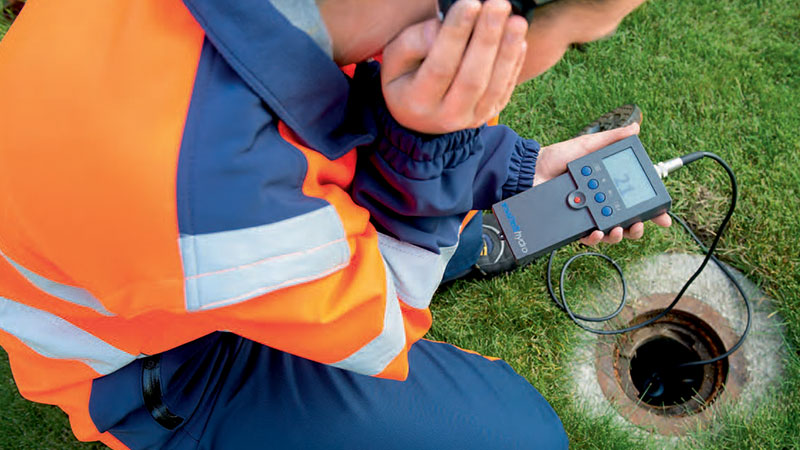Comprehensive Methods for Timely Identification and Mitigation of Water Leak Issues
Water leakages within household, industrial, or industrial setups can lead to substantial damage, pricey repairs, and functional disturbances if left undetected or unaddressed. The ability to promptly determine and mitigate water leakage problems is vital in securing residential properties and making certain business connection. In a world where prevention is even more economical than repair, the adoption of extensive methods becomes vital. From leveraging sophisticated technologies to cultivating a culture of positive upkeep, the landscape of water leakage management is progressing. Let's discover how an all natural technique to early discovery and mitigation can transform the way we safeguard our assets and maintain our environments.
Relevance of Very Early Detection

Using Smart Leak Detection Systems
Executing sophisticated clever leak detection systems changes the method to identifying and managing water leaks in modern-day residential properties. These systems use advanced innovation such as sensing units, expert system, and real-time monitoring to give exact and timely discovery of leaks. By mounting these systems, building proprietors can proactively deal with leaks prior to they intensify right into costly water damages incidents.
Smart leakage discovery systems offer various advantages. They can detect leaks in hard-to-reach locations or hidden areas, protecting against water damage that may otherwise go undetected for an extensive period. Additionally, these systems can immediately turn off the water system when a leak is identified, minimizing water waste and alleviating the level of damages.
Furthermore, the information gathered by smart leak discovery systems can give useful insights into water use patterns, helping residential property proprietors determine inefficiencies and maximize their water management methods. In general, the integration of wise leakage detection systems is an aggressive and reliable method to guard buildings against the destructive impacts of water leakages.
Applying Routine Examinations
Structure upon the structure of making use of clever leak discovery systems, a critical element in keeping water leak avoidance and management is the implementation of routine assessments. Regular inspections play a vital duty in proactively determining potential water leakage issues before they intensify right into major troubles. By carrying out set up assessments of these details plumbing systems, fixtures, and facilities, center supervisors can detect leakages at an early stage, stopping water damages, mold growth, and expensive repair work.
During these inspections, trained personnel should completely examine areas susceptible to leaks, such as bathrooms, kitchen areas, utility rooms, and around water-using appliances - water leak detection. They need to likewise look for signs of water damage, consisting of damp places, water spots, and unusual smells. Furthermore, checking the condition of pipes, installations, and seals can help identify wearing away parts that may bring about leaks in the future
To improve the performance of regular inspections, companies can carry out an organized inspection routine, maintain in-depth documents of findings, and without delay attend to any recognized issues. By focusing on preventative maintenance with routine examinations, companies can reduce the dangers related to water leaks and guarantee the durability of their water facilities.
Reliable Interaction and Reporting
Enhancing communication networks and developing efficient coverage systems are essential components in the reliable monitoring of water leak identification and mitigation techniques. Clear and timely communication among all stakeholders entailed in the process, including maintenance personnel, residential or commercial property supervisors, and residents, is essential for quick action in dealing with water leakage issues.
Applying a structured reporting system that permits simple paperwork and monitoring of water leak incidents can significantly aid in the monitoring of such problems. This system needs to consist of details such as the area of the leak, its severity, activities taken to resolve it, and follow-up measures. By making sure that all pertinent celebrations understand the reporting procedures and expectations, the response time to water leakages can be minimized, therefore decreasing possible damage and connected prices.
Regular updates and feedback on the status of reported leakages are additionally important for preserving openness and responsibility within the company. By cultivating a society of open interaction and liability, water leakage concerns can be addressed quickly and successfully, see this website bring about a much more sustainable and efficient water management system.

Emergency Response Planning
Developing an extensive emergency situation feedback strategy is essential for efficiently addressing water leakage occurrences and lessening possible damage. An emergency reaction plan should describe clear treatments for prompt actions to be taken upon the exploration of a water leakage. These activities might consist of turning off the major water system, leaving the afflicted area, and speaking to relevant employees such as upkeep team or emergency situation services.
Secret components of an efficient emergency response prepare for water leaks include appointing duties to assigned people, developing interaction protocols, and carrying out routine drills to make certain readiness. It is vital to educate workers on exactly how to react promptly and suitably to water leak emergencies to avoid escalation and mitigate risks to property and owners.
Additionally, the emergency situation response strategy need to consist of a list of emergency calls, such as plumbing professionals, restoration companies, and insurance policy companies, to speed up the action process - water leak detection. Regular testimonial and updates to the emergency reaction strategy are vital to resolve any changing scenarios or improvements in feedback approaches. By proactively establishing and preserving a durable emergency action plan, companies can decrease the effect of water leak incidents and guard their possessions
Verdict
Finally, prompt recognition and mitigation of water leakage problems are important for avoiding expensive damages and maintaining functional performance. By using smart leakage discovery systems, applying regular examinations, fostering reliable interaction and coverage, and having an emergency response strategy in area, organizations can proactively address water leakage concerns before they intensify. Prioritizing these comprehensive techniques official site will certainly help ensure an aggressive method to taking care of water leak issues and preserving a safe and functional environment.